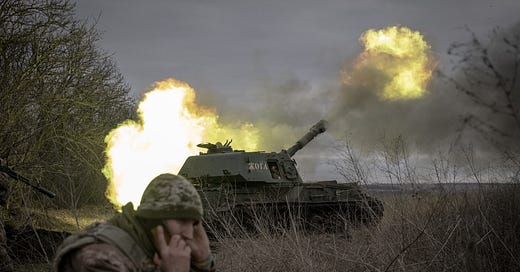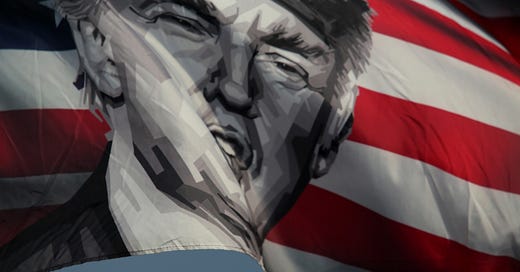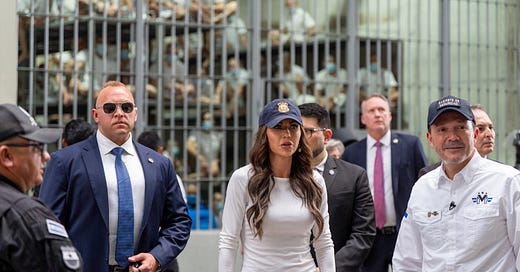
A Clear-Eyed Look at the Ukraine War as It Enters Its Third Year
Russia has succeeded only in building what one critic calls a “castle of sand and shit.”

IN THE TWO YEARS SINCE THAT PRE-DAWN FEBRUARY MORNING when Russian troops smashed across the border and missiles began to fly, the war in Ukraine has changed our world. It has given new names and faces to heroism, from Volodymyr Zelensky’s defiant dignity to the desperate Mariupol defenders taking their last stand in the catacombs of a gigantic Soviet steel factory to the captured Ukrainian soldier saying Slava Ukraini before being shot dead. It has given new addresses to evil—above all, Bucha, the once-quiet and prosperous Kyiv suburb that became a killing field under Russian occupation. It has resurrected grim, World War I-style images of the sort of fighting long thought to have disappeared from Europe: stalemated or nearly stalemated combat in which every square foot of ground is contested in brutal combat.
Where does it go from here?
For all the speeches and rallies to show solidarity with embattled Ukraine, the war’s second anniversary is shadowed with pessimism among many Ukraine supporters, after the failure of Ukraine’s summer counteroffensive and Russia’s capture of Avdiivka, a Russian target since 2014. It is widely believed that Western democracies are suffering from “Ukraine fatigue” and that Ukrainians themselves are exhausted and demoralized by massive losses of life. Meanwhile (so the narrative goes), the Russian economy is thriving instead of collapsing under the weight of Western sanctions, no wave of popular discontent threatens Vladimir Putin’s rule, Kremlin-friendly dictatorships have turned out to be far more reliable suppliers of weapons to Russia than Western democracies to Ukraine, and time is on Putin’s side.
This pessimistic narrative should be put in perspective, especially given the early days of the war, when the Russian propagandists’ exuberant talk of taking Kyiv in three days and holding a victory parade was matched by grim Western expectations—before Ukraine managed to turn things around even without any significant deliveries of advanced Western weapons. (One event whose importance in those early Ukrainian successes is often underestimated is the battle at the Hostomel Airport, where an assault by Russian forces on the first day of the invasion ran into ferocious Ukrainian resistance; the pitched battle not only delayed the airport’s capture but inflicted so much damage that it could not be used for airlifting more troops to the area. The airport was liberated at the end of March or the start of April when Russian troops pulled back from Kyiv.)
Ukrainian victories, particularly in the fall of 2022, raised expectations, aided by apparent disarray in the Russian armed forces; the conflict between the Wagner mercenary forces and Russia’s Ministry of Defense culminated in the Wagner mutiny last June. But the rebellion fizzled (and we all remember how it turned out for its leader, Wagner chief Yevgeny Prigozhin, once touted as a possible Putin rival). Meanwhile, Russia was able to fortify its defenses in occupied Ukrainian territories enough to largely thwart the Ukrainian counteroffensive—and then seize the initiative and go on the offense, forcing Ukraine into a defensive position. The fall of Avdiivka was the result—though many observers also blame it on ammunition shortages caused by interruptions in American aid due to the Republicans’ sabotage of military support for Ukraine.
So now we’re seeing not only everyone-knows-Ukraine-can’t-win gloating from such habitual Kremlin-talking-point amplifiers as David Sacks and Glenn Greenwald, but also such headlines as “Why Ukraine Is Starting to Lose” from people sympathetic to Ukraine’s cause.
Still, some commentators—such as Russian-American journalist Michael Nacke, an analyst who, while unabashedly sympathetic to the Ukrainian cause, is sufficiently sober and fact-based to have warned about the overhyping of the Ukrainian counteroffensive last summer—argue that this new pessimism is in large part the product of Russian propaganda intended to undercut Western support for Ukraine and force Ukraine into peace talks on unfavorable terms. In a video he posted over the weekend, Nacke derided the illusion of Russian success as a Kremlin-sponsored “global bluff” and, even more colorfully, as a “castle of sand and shit.”
The pyrrhic victory at Avdiivka, a ravaged and depopulated town taken at massive cost (videos shot by Russians themselves show the ground literally littered with dead bodies of Russian soldiers), is a case in point. Last week, Russian war blogger and ex-soldier Andrei Morozov (“Murz”) committed suicide after state media propagandists savaged him for talking about the huge losses in the four-month battle for Avdiivka. This conflict, and its tragic results, suggests that societal consolidation around the war is an illusion—and these tensions can only grow if there’s a new round of mobilization.
It is, finally, far from clear that time is on Putin’s side at this point in the war. Ukraine is already taking a leaf from the Russian playbook and building its own fortifications and defenses. While Ukraine may be outmanned (and has its own internal conflicts surrounding the issue of mobilization), it is vastly more committed to avoiding unnecessary losses than Russia and has focused on building up strong reserves and finding flexible ways to boost recruitment, such as allowing people to serve in the units of their choice. Meanwhile, promised deliveries of Western weapons, ammunition, and machinery may have been frustratingly slow, but Ukraine will receive important resources this year (including F-16s), and the production of essential armaments is likely to be ramped up to meet previously stated commitments. The impasse over U.S. aid to Ukraine may be resolved as well, thanks partly, perhaps, to revulsion at Putin’s murder of opposition leader Alexei Navalny.
Which brings us to another important reason time may not be on Putin’s side. Every day that goes by is another opportunity for either Putin or the henchmen around him to say or do something sufficiently reprehensible to set off a wave of international outrage at the regime’s inhumanity. The Navalny murder has turned out to be a line in the sand even for Ukraine-skeptic Andrew Sullivan, who responded by calling for more and faster aid to Ukraine as well as steps to strengthen NATO in order to rein in Putin. Other developments—such as Russia’s continuing war crimes, including the recently reported executions of Ukrainian POWs, and Russia’s ongoing interference in American politics—may likewise wake up more U.S. commentators and policymakers not only to the barbarity of Russia’s war of aggression in Ukraine, but to the reality that the menace of Putin reaches far beyond Ukraine.
As the war moves into its third year, the lies and vicious depravity of Vladimir Putin continue to appall, the resilience of the people of Ukraine continues to impress, and the links between the future of the war and the future of American democracy become harder to miss.















